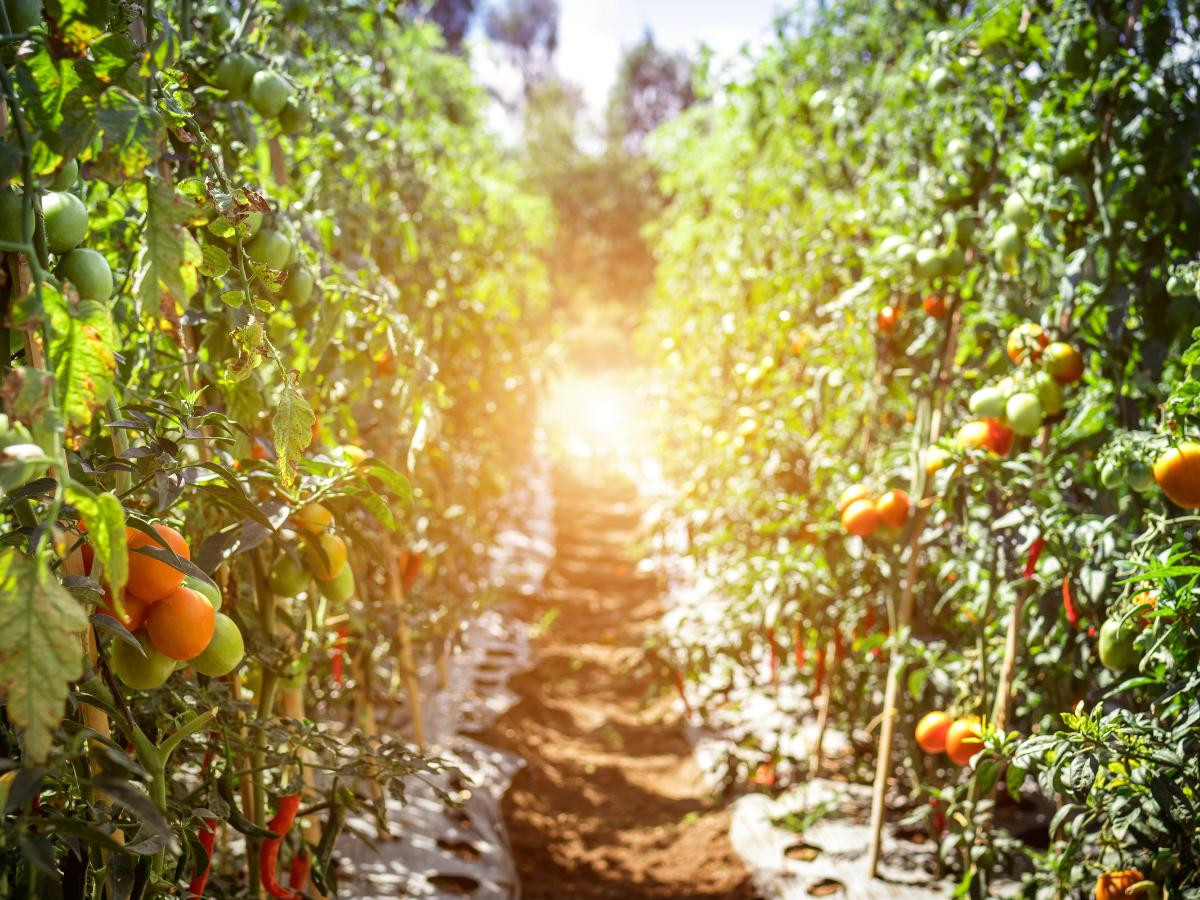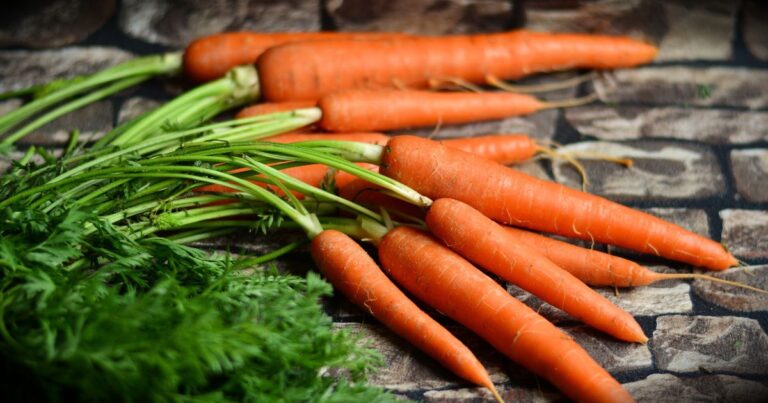The Origin of The Tomato: A History of Tomatoes
Let’s Talk Tomato Origins and take a journey from the South American wilds to a global culinary icon, exploring its history, varieties, and the impact it has on our health and culture.

As an executive professional chef, I’ve always been captivated by the tomato’s remarkable journey. This vibrant burst of color isn’t just a visual delight on our plates; it’s a culinary marvel that consistently tantalizes our taste buds.
But have you ever paused to consider the tomato’s fascinating evolution beyond its aesthetic and flavor?
From its origins as a wild fruit in the South American wilderness to becoming an indispensable ingredient in kitchens worldwide, the tomato’s story is as rich and varied as its flavors.
Every time I find myself craving tomatoes’ unique, refreshing taste, I’m reminded of this extraordinary voyage. Let me be your guide and let’s explore the roots of the tomato, its global expedition, the development of the diverse varieties we cherish today, and its significant impact on our health and culture.
This isn’t just an exploration; it’s a journey that will forever transform the way we view this ubiquitous yet extraordinary fruit—or, should I say, vegetable.
Table of Contents
Tomato Origins Key Takeaways

Tomatoes have a long history, beginning with wild ancestors in Ecuador and being domesticated by the Aztecs.
Tomatoes were initially considered poisonous but eventually became one of the most significant horticultural crops globally due to their successful journey around Europe, Asia, the Middle East & North Africa, and America.
Selective breeding programs have been instrumental in developing improved varieties, while seed banks preserve genetic material for future agricultural advancements. Tomatoes also provide nutritional benefits, although there are potential risks associated with consuming them, such as exposure to pesticides or microbial contamination.
Tomato Beginnings: Wild Tomatoes and Wild Ancestors

Imagine the wild landscapes of western South America, the cradle of countless plant species, including the wild ancestors of our beloved tomatoes. These wild tomatoes were no larger than a grape and bore a tart flavor, their orange or yellow hues contrasting starkly with the red tomatoes we know today.
The wild tomato species from this region, particularly those from Ecuador to northern Chile, including the Galapagos Islands, hold a significant place in botanical research as they are the forebears of all cultivated tomato varieties we enjoy today.
Interestingly, tomatoes belong to the same genus, Solanum, as chili peppers, potatoes, tomatillos, eggplant, and even tobacco, demonstrating the diverse and interconnected nature of the nightshade family in the plant kingdom.
Ecuadorian Roots
Our journey takes us to Ecuador, some 80,000 years ago, where wild, cherry-sized tomatoes first emerged. The distinct flavor characteristics of these tomatoes caught the attention of ancient Ecuadorians, who incorporated them into their diet, making tomatoes one of the earliest forms of sustenance.
The ecological conditions in Ecuador, particularly its well-drained soils and optimal air and water infiltration rates, provided an ideal environment for the growth of these wild cherry-sized tomato seedlings. The survival and spread of these tiny tomatoes set the stage for the fascinating journey of the tomato.
Mesoamerican Domestication
Moving ahead to Mesoamerica, around 7,000 years ago, this is where the domestication of tomatoes occurred. The Aztecs and other Mesoamerican civilizations transformed the wild, tart tomatoes into larger, sweeter varieties akin to modern-day cherry tomatoes. Mystical powers were attributed to these tomatoes, cementing their place in Aztec culture.
Imagine walking through the bustling Aztec market at Tenochtitlán and being dazzled by a colorful array of tomatoes in various shapes and sizes. From large to small, leafy to nippled, and colors ranging from the brightest red to the deepest yellow, the diversity was truly mesmerizing. The term ‘tomato’ has its roots in the Aztec word ‘xitomatl’, further underscoring the central role of tomatoes in Aztec culture.
The Global Tomato Plant Journey

As the 16th century began, Spanish conquistadors like Hernán Cortés embarked on exploratory voyages. Along with tales of their adventures, they brought back a golden treasure from the New World – the tomato, often referred to as the golden apple or love apple. However, the tomato’s journey was not without hurdles. The initial response to tomatoes in Europe was largely unfavorable, as they were feared to be poisonous and often called poison apples due to their resemblance to the toxic Mediterranean mandrake and deadly nightshade plants.
Yet, despite these initial fears, tomatoes gradually found their way into the pots and plates of various cultures worldwide, eventually becoming the most significant horticultural crop globally.
European Adoption

When tomatoes arrived in Europe in the 16th century, they were viewed with suspicion and fear. Their resemblance to the toxic Mediterranean mandrake and deadly nightshade plants led many to believe they were poisonous. As a result, tomatoes were initially grown as an ornamental plant rather than for consumption.
Yet, attitudes towards tomatoes shifted as time passed. The first mention of tomatoes as an edible plant was by Pietro Andrea Mattioli in 1544, and by the 19th century, tomatoes were being consumed and produced across Europe. In French culture, tomatoes were even named ‘love apples’ (pomme d’amour), a testament to their growing popularity.
Asian Introduction
The 1500s witnessed the introduction of tomatoes to China. Named ‘fānqié’ or foreign eggplant, their arrival was met with curiosity and interest. Over time, tomatoes became an integral part of various Asian culinary traditions.
Their introduction substantially impacted agriculture in China, introducing a new crop to the region and contributing to the diversity of agricultural practices. Today, tomatoes play a vital role in traditional Chinese dishes, showcasing the versatile culinary potential of this humble fruit.
Middle Eastern and North African Expansion
Our journey continues to the Middle East, where British Consul John Barker introduced tomatoes in the early 19th century. Over time, tomatoes became an indispensable ingredient in Middle Eastern cuisine, finding their way into salads, kebabs, and sauces.
The journey of the tomato didn’t stop there. It made its way to North Africa during the period of the transatlantic slave trade. From Nigerian Jollof rice to Egyptian Shakshuka, tomatoes are now a fundamental ingredient in many North African dishes, making tomato recipes an essential part of their culinary culture, often featuring tomato sauce as a key component.
American Acclimation
The journey of the tomato eventually came full circle, returning to the Americas, specifically to North America. European immigrants introduced tomatoes, initially met with suspicion due to the prevalent belief in their toxicity.
However, as time passed, these fears subsided, and tomatoes began to be cultivated extensively. Today, the American population holds tomatoes in high regard, cherished for their taste, versatility, and nutritional benefits.
The Evolution of Modern Tomato Plants

The tomato’s wild ancestors have undergone significant transformation courtesy of diligent botanists and breeders such as Alexander W. Livingston, who developed many tomato varieties for home and commercial gardening.
These breeding programs aim to enhance different traits in tomatoes, such as production, size, shape, color, flavor, disease tolerance, and others.
Breeding Programs
Selective breeding has been instrumental in the development of the tomato. By selectively choosing desired characteristics, breeders have been able to:
Enhance yield
Improve flavor
Extend shelf life
Increase resistance to diseases
Universities actively involved in tomato breeding programs include:
NC State University
University of Florida
Cornell University
Rutgers University
Miguel Hernández University
These universities are leading the way in the research and development of enhanced tomato varieties.
Tomato Seeds: Seed Banks
Seed banks are essential in preserving and maintaining a varied collection of tomato seeds. These banks serve as a resource for researchers and breeders, providing access to a wide range of genetic material that can be used to enhance traits such as disease resistance, flavor, and yield.
Global seed banks, including the Svalbard Global Seed Vault and Tatiana’s TOMATObase, ensure the preservation of seeds that contain valuable genetic variations crucial for future breeding and research in modern agriculture.
Are Tomatoes a Fruit or a Vegetable?
Classifying a tomato as a fruit or a vegetable has been a contentious discussion for centuries. Botanically, tomatoes are identified as a fruit. They are considered berries, consisting of the ovary and seeds from a flowering plant. Often, smaller tomatoes are named after fruits like grape or cherry tomatoes.
However, in culinary terms, tomatoes are often classified as a vegetable due to their savory flavor and lower sugar content. Legal decisions in the United States have even classified tomatoes as a vegetable for tariff purposes, further fueling this debate.
Cultivating and Harvesting Tomatoes

The cultivation of tomatoes requires attentive watering, pest and disease management with eco-friendly insecticides, crop rotation, and regular surveillance for pests or diseases, all contributing to the quality of eating tomatoes.
The ‘square tomato’ was created in the 1950s to enable machine harvesting, revolutionizing the tomato harvesting process.
Pests and Diseases
Like all crops, Tomato plants are susceptible to various pests and diseases. Some common pests that damage tomatoes include:
Tomato bugs
Stink bugs
Cutworms
Tomato hornworms
Tobacco hornworms
Aphids
Cabbage loopers
Whiteflies
Tomato fruit worms
Flea beetles
Red spider mites
Slugs
Colorado potato beetles
It’s important to monitor your tomato plants regularly and take appropriate measures to control these pests and prevent damage to your crop.
However, strategies such as the use of BT (Bacillus thuringiensis) against hornworms and caterpillars, handpicking pests, organic insecticides like Spinosad and pyrethrin for intense infestations, and bio-solarization to combat soilborne pathogens can be used to manage these pests and diseases.
Harvesting and Ripening
Harvesting tomatoes involves gently twisting the fresh tomatoes from the vine or using sharp scissors to cut them. The optimal time for harvesting depends on various factors, including the variety, climate, care, ripening process, uniform color, weather conditions, soil health, and fruit coloration.
Tomatoes are often harvested while unripe and subsequently ripened in storage through ethylene gas, a natural plant hormone. This process enables tomatoes to be transported without damage and then ripened at the desired time for the market, guaranteeing optimal freshness and flavor at the point of sale.
Nutritional Benefits and Potential Risks
Tomatoes, containing approximately 95% water, 4% carbohydrates, and less than 1% fat and protein, are a low-energy-dense food and helpful in maintaining a balanced diet. However, there are various risks related to consuming tomatoes and tomato juice, including:
Exposure to pesticides
Microbial contamination
The presence of heavy metals from contaminated soil
The antiplatelet effect of lycopene
Lycopene Research
Lycopene, a powerful antioxidant present in tomatoes, provides various health advantages, such as inhibiting fat oxidation, protecting against free radical stress, and potentially lowering the risk of specific types of cancer.
Research suggests that lycopene can:
Enhance heart health
Contribute to the prevention of cardiovascular disorders.
Reduce inflammation associated with heart disease.
Inhibit cholesterol synthesis
Enhance the degradation of LDL cholesterol
Tomato Impact on Popular Culture
Tomatoes have left a significant imprint not only on our diets but also on our cultures and traditions. From La Tomatina, Spain’s annual tomato battle festival, to their recognition as a state symbol in the US, the cultural significance of tomatoes is indisputable.
Even in media and entertainment, tomatoes have left their imprint. The popular film and television review aggregator, ‘Rotten Tomatoes,’ draws its name from the historical tradition of audiences throwing rotten tomatoes to express disapproval of subpar stage performances.
Summary
From its wild origins in South America to its global cultivation, the humble tomato has embarked on a remarkable journey.
Along the way, it has been transformed by human hands, evolved through selective breeding, and integrated into diverse culinary traditions. Whether you consider it a fruit or a vegetable, one thing is clear – the tomato is firmly rooted in our diets, cultures, and hearts.
So, the next time you savor a tangy tomato sauce or bite into a juicy, ripe tomato, take a moment to appreciate this vibrant fruit’s fascinating journey to your plate.
Frequently Asked Questions
Where did Tomatoes Originally Come From?
Tomatoes originally come from the wild plants in the Andes Mountains of South America, primarily in Peru and Ecuador, and were later domesticated in pre-Columbian Mexico. The name comes from the Náhuatl (Aztec) word tomatl.
Are Tomatoes Native to Europe?
Tomatoes are not native to Europe; the Spanish conquistadores introduced them after the capture of Tenochtitlan in 1521.
What is the Natural History of Tomatoes?
Tomatoes originated in the Andean region of South America, likely from Solanum pimpinellifolium. Indigenous peoples then cultivated them as they spread northward into Mexico and beyond. However, research suggests that the cherry-sized tomatoes we know today have only been around since 80,000 years ago and were not fully domesticated until much later.
Who Brought Tomatoes to America?
Tomatoes were likely brought to America by Spanish, French, and Caribbean settlers or enslaved Africans responsible for the cooking on Southern plantations.







